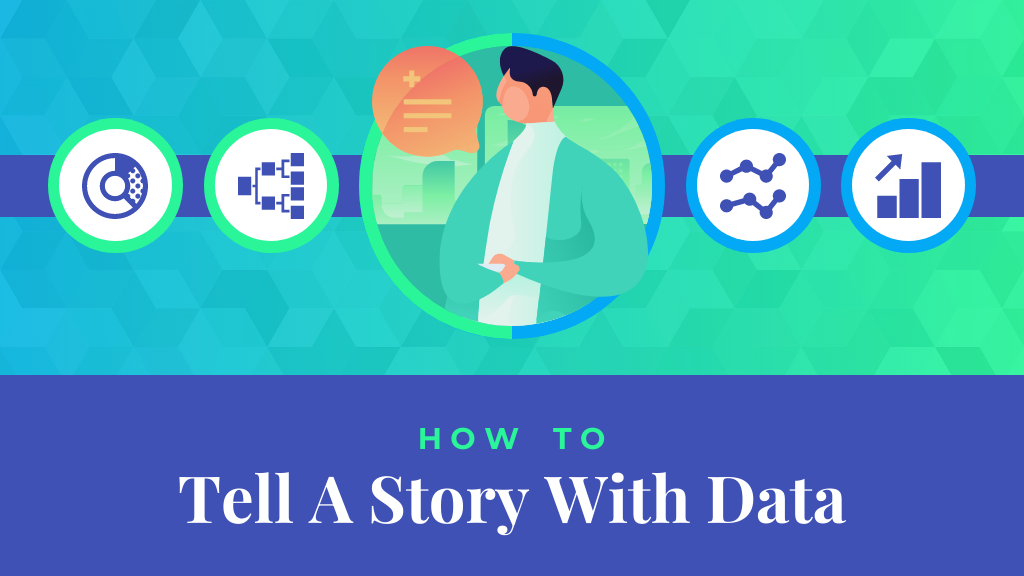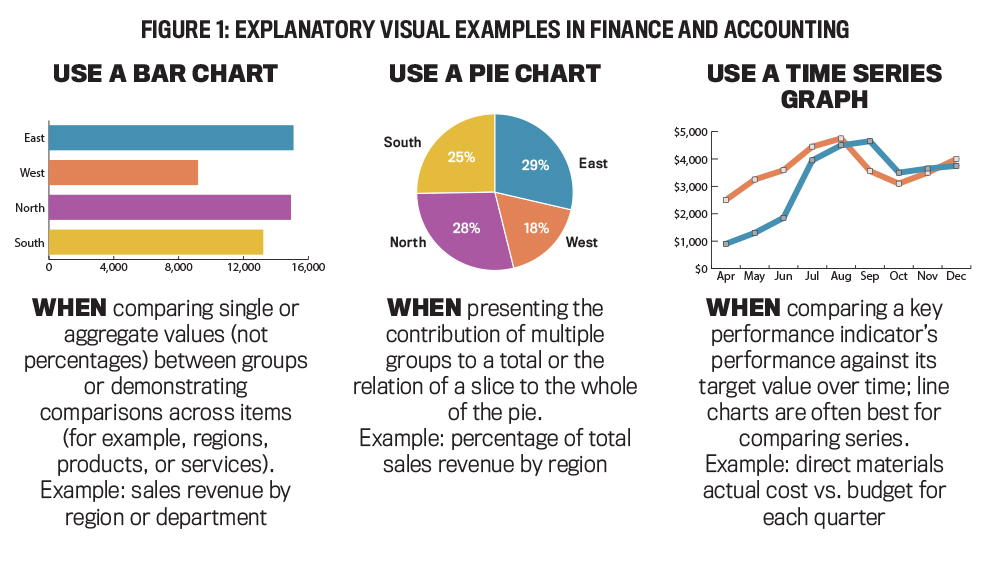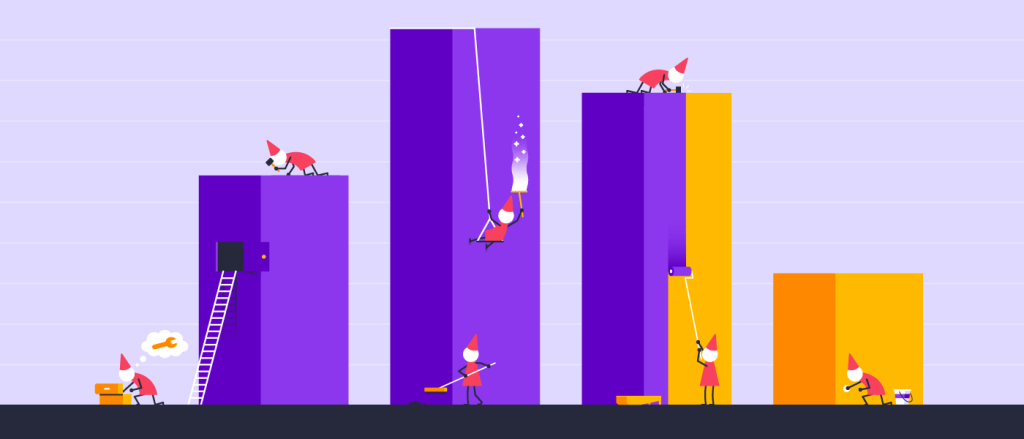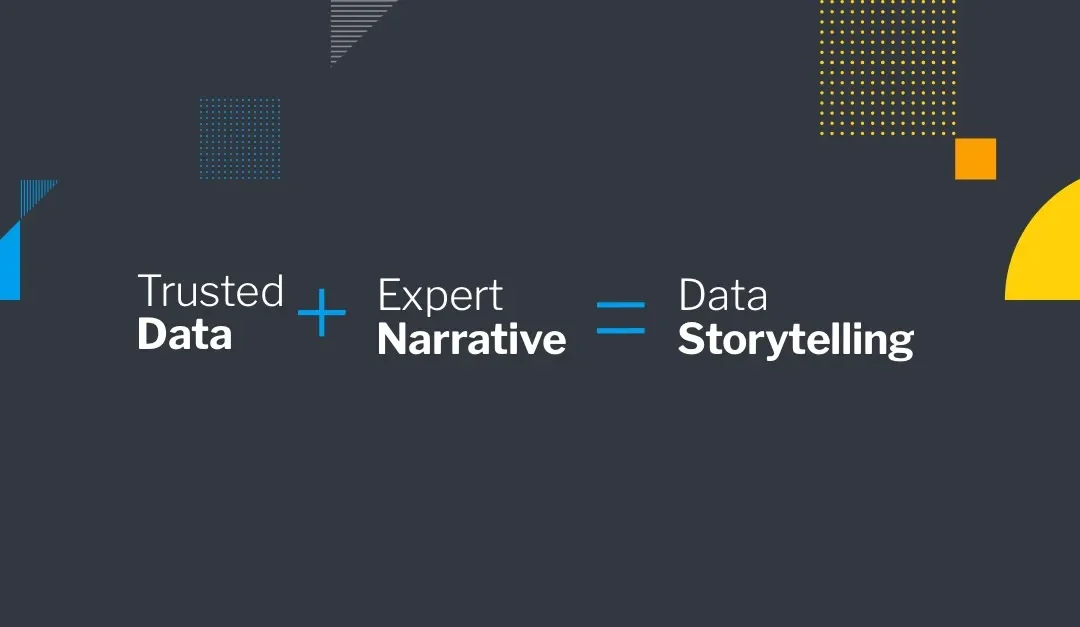Storytelling with data is a crucial part of any content marketer’s toolbox. Whether you are using data visualization to illustrate a point you’re trying to make.
or you want to showcase data from an analysis your team has done, proper data design is key to creating effective visuals that everyone is happy with. Charts and infographics can be pretty, but if they aren’t also properly breaking down data in a way that makes an impact on the audience, they are likely not worth the time and effort we discuss how storytelling ties into data visualization, and what tools can help you bring more data into your content. We also recently updated our Learn Center article about storytelling with data, to highlight how data transforms our content and legitimizes the points we’re trying to
Visualization is the act of taking data and breaking it down in a visual way that helps the audience understand at a glance what the data is telling us. This could be something like taking population data from a town and creating a pie chart that shows the age ranges of all residents or looking at a bar chart to see that the number of apps an average user downloads on their smartphone has slowly increased over time. Then, after this data is introduced, we use storytelling through content to further explain what the data is telling us.

For instance, if we know that the average user downloads two more apps to their phone then they did five years prior, we can deduce that users are likely using their phones more.
This can help us introduce our main point or solution, such as an app cleaning utility to help users remove apps they no longer use, or behavioral modifications for users that want to be on their phone best tools for data visualization
If you’re looking to create your unique data visuals, which is recommended so you don’t use someone else’s data without their permission, there are several tools you can use to gather data that will influence the main points in your content narrative. These free and paid tools range from the following providing the data for you in a chart you raw data to build into you to import your raw data so you can build the visuals you need to properly summarize the data point your own data visualizations can help you create imagery that illustrates your point, influences users to take action, or helps you explain your points in a visual way. Whether you need data trends over time or an analysis of your data to determine next steps, these tools can help.

Google Trends
Most SEOs are aware of Google Trends, but almost any industry can use it to get a quick pulse on what is trending in their specific field of products or services.
For instance, if you are an e-commerce, you can check out the Google shopping trends to see what products are being searched for most recently. The page also points out large spikes for specific product terms for e-commerce, such as y2k aesthetic. Additionally, Google Trends also shows daily overall trending search topics in specific countries. This is really useful if you’re looking for data that applies to a specific country or the pulse of a certain area overall, such as music or current events. The main section of Google Trends allows you to compare multiple topics as once to see how user interest has ebbed and flowed over time. This data can be an effective way to showcase how specific audiences have gained or lost interest in a
If you already have data that you need to plot into charts, Google Charts under Google’s development tools is a great way to do that. It allows you to import data which you can create visualizations from and then place on your website. It’s free and completely customizable. It also has a gallery you can browse for examples of available charts, which can help you decide which is best for your data.

Additionally, Google Data Studio is similar to Google Charts, where you can import several different data sources to create graphics and live charts based on API-connected data. However
909holdings
If you’re looking to share keyword research or search data over time, consider using 909holdingsPro allows you to track your campaign data over time (as well as research competitors. This data analysis can be used in marketing pieces to describe trends in search over time, or you can use this type of data in your internal stakeholder content, such as when you want to illustrate the success of your organic content campaigns or how the number of links to specific pages has increased over time since you started updating old posts. Tableau Tableau is arguably the most well-known data visualization tool available. It has paid and free versions. The free version, Tableau Public, requires a software download, but then lets you create data visualizations for free (with some limitations that are lifted in the paid version. To see some of the data visualizations that were created using Tableau, they have their free that lets you walk through a 3D “art gallery” of real projects. Here’s an example covering “Work Like an Artist: Daily Routines of Famous Creatives” from a user who adapted information from books on creatives’ work schedules by Mason Currey, Wikipedia, and blog posts. If you were looking for data from large companies, many make some of their data public, which can be pulled to create a data analysis or trend report over time. Two good examples of this are.

If you want to see how specific music or other media hosted on Spotify is performing over time, check out Spotify Charts, which shows you trends in specific genres of music or by country.

If you want the most simple way to chart your raw data, don’t discount the power of pivot tables and charts in Excel or Google Sheets. These can automatically provide you with charts and other data graphics fast, right within your saved data spreadsheet. There are lots of resources to create effective charts and graphics. It’s important to note Google Sheets may have slightly different formula functions than Excel in some cases To learn more about storytelling with data, don’t forget to review our recently updated Learn Center page. Whether you are using a simpler tool like Google Sheets or want to build a beautifully-designed infographic in Tableau, data visualization is a great way to further your storytelling narrative by illustrating your point and growing users’ understanding of the topic at hand

